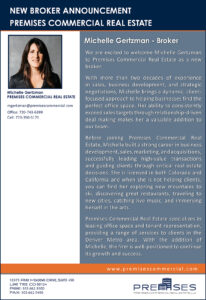Denver’s Dynamic Office Scene in 2025
Denver’s office market is evolving rapidly, offering both opportunities and challenges for businesses. Vacancy rates downtown have surged post-pandemic (around 32% in 2025), yet certain hotspots like LoDo and Cherry Creek remain highly sought-after with lower vacancies and premium rents. What does this mean for you? In short, it’s a tenant’s market in some areas, but top-tier spaces in prime neighborhoods still command top dollar. To help you navigate your search, below we summarize key insights on renting office space in Denver, from average lease rates by neighborhood to insider tips on the leasing process.
Average Office Lease Rates in Denver’s Top Neighborhoods
Location matters a lot in Denver. Office lease costs can vary dramatically by neighborhood and building quality. Here’s a quick snapshot of average asking rents in a few major submarkets (full-service rates per square foot, per year):
| Denver Submarket | Avg. Asking Rent (2025) | Vacancy Rate |
| Downtown (CBD) | ~$35 per SF | ~32% (high) |
| LoDo (Lower Downtown) | ~$47 per SF | ~25% (varied) |
| RiNo (River North) | ~$49+ per SF (high) | ~25% (varied) |
| Cherry Creek | ~$39 per SF (all classes) $60per SF for newer Class A | ~6% (low) |
| Denver Tech Center | ~$31 per SF | ~21% (varied) |
Source: CoStar July 2025
As the table shows, premium submarkets like LoDo, RiNo, and Cherry Creek boast the highest rents. RiNo, for instance, has some of Denver’s newest creative office buildings and has hit record-high asking rents around $49/SF– even higher than downtown’s average of ~$35/SF. Cherry Creek, an upscale district, is “the place to have an office” with very tight vacancy (6%) and premium Class A spaces commanding $60/SF full-service. By contrast, older Downtown CBD towers average in the low $30s/SF, and suburban areas like the Denver Tech Center (DTC) are affordable ($21/SF). Takeaway: set your budget with the neighborhood in mind. You may snag great deals in soft areas (landlords are increasingly willing to negotiate), whereas in hot spots be prepared for higher rates and less availability.

Ready to explore further?
Top Considerations When Leasing Office Space in Denver
Rent price is just one piece of the puzzle. Denver’s diverse business community, from startups in RiNo to law firms in LoDo, should consider several factors before signing a lease:
- Budget & Lease Type: Determine your total budget, not just base rent. Understand the lease structure: a full-service (FS) lease means one gross rent covering everything, whereas a triple-net (NNN) lease means a lower base rent plus operating expenses (taxes, insurance, maintenance) passed through to you. Denver has all types, so clarify what is included (utilities, janitorial, etc.) and plan for annual rent escalations. Pro Tip: Many Denver office leases are full-service gross, but usually doesn’t include covered parking fees.
- Space Needs (Square Footage): How much space do you really need? This depends on your team size, layout preferences, and work style. Pre-COVID norms were ~150 SF per person, but by 2020 it grew to ~196 SF/person on average. With hybrid work and “hoteling” of desks, some companies now require less space per employee. In the Denver area, you might see ratios from 3 to 7 people per 1,000 SF (i.e. ~150–333 SF per person) depending on whether you favor open collaborative areas or private offices. List how many offices, conference rooms, and open workstations you need. It’s wise to allow room for growth if you anticipate hiring – but also avoid paying for space that will sit empty. With a space program in hand, you can calculate a good estimate of how much space you need. (link to our space calculator?)
- Location & Amenities: Each neighborhood in the Denver area offers a unique vibe. Do you need to be walking distance to courts and clients (Downtown/CBD or LoDo for law firms), or prefer a trendy tech hub with breweries and art (RiNo)? Consider commute and transit access (Downtown and LoDo have light rail and Union Station). Since parking can be a major factor in Denver, ensure the building has adequate parking or nearby garages, and factor in additional parking costs. Also evaluate on-site amenities; modern buildings may offer fitness centers, bike storage, tenant lounges, event spaces or other perks that can boost employee satisfaction.
- Lease Term & Flexibility: Decide on a lease length that fits your business plan. Short-term leases (≤3–5 years) offer flexibility (easier to grow/shrink or relocate) and simpler negotiation, which can be ideal for startups or uncertain headcount. Long-term leases (5–10+ years) often secure better incentives; landlords may grant free rent periods or larger tenant improvement allowances for a longer commitment. Think about your stability and growth. If you lock in a low rate long-term, it provides predictability, but only if you’re confident the space will serve your needs in a few years. Many Denver tenants in 2025 are hesitant to commit long-term due to market flux, but others are seizing great deals on 7+ year leases with generous concessions.
- Tenant Improvements (TI) & Build-Out: If the space isn’t a perfect fit “as is,” you’ll need build-out work. Clarify who pays for and manages tenant improvements. Often, landlords provide a TI allowance (a budget they fund for customizing the space) – e.g. $X per SF to build offices, install new carpet, paint, etc. In Denver’s competitive market, Class A landlords commonly offer TI packages and even turn-key buildouts. Negotiate for what you need: more TI dollars if the space needs major changes or perhaps ask for rent abatement (free rent) as an alternative incentive. Also decide if you will handle project management of the build (hire your own architect/contractor) or let the landlord handle construction. Each approach has pros and cons. (Denver tip: depending on the municipality permitting can last from 1 to 4 months plus construction time, so factor in a for the time needed for build-out before your target move-in.)
- Operating Expenses & Extras: Denver landlords will pass through increases in operating costs in most leases. In a full-service lease, the year of signing becomes a “base year.” If property taxes or expenses rise in future years, you may be billed your share of the increase. In a net lease, you’ll pay your share directly starting upon commencement. Ask about recent CAM (Common Area Maintenance) historical costs and future trends. New energy-efficiency rules in Denver (like the Energize Denver initiative) might lead to building upgrades. Ensure any such capital improvement costs aren’t unfairly passed to you. Janitorial services are typically included but you should check into the level of such service provided. Avoid surprises by getting everything in writing in the lease about who covers what.
Denver Office Leasing Roadmap: Step-by-Step
Leasing office space can be complex, but going in with a plan makes it manageable. Here’s an overview of the Premises Advantage: 12-Step Leasing Roadmap, highlighting local twists to be aware of:
Step 1: Select a Tenant Broker
Don’t go it alone. A knowledgeable tenant representation broker is critical in Denver’s market. Surprisingly for many, the tenant rep’s commission is usually paid by the landlord. A good broker will help you define your needs, identify all viable spaces (including off-market options), arrange tours, and competitive negotiate on your behalf. They also know Denver’s lease quirks, market comps, and Landlord/buildings reputations. When choosing a broker, look for experience in your submarket and strong client reviews. The right broker helps you find the right space and saves you time and money; while ensuring you avoid pitfalls. (At Premises Commercial Real Estate, for example, our tenant advisors will leverage multiple competitive quotes on your behalf to negotiate the best market rate for Denver office space”.)
Step 2: Needs Assessment & Budgeting
Work with your broker to clarify what you need and when. Determine your ideal move-in date and work backward – finding and fitting out an office can take anywhere from a few weeks to upwards of 12 months for complex relocations. Starting early is key. Next, outline 5 key areas: timing, budget, space requirements, project management, and special objectives. Decide who will manage the relocation logistics (internal team or external project manager). List any “must-haves” (e.g. need to be in Cherry Creek, or need 10 reserved parking spots, or fiber internet connectivity, etc.). By the end of this step, you should have a rough space program (e.g. “5,000 SF for 20 people, open layout, 2 conference rooms, pet-friendly building”) and a target budget range. This will guide the search.
Step 3: Market Research & Property Tours
Now the hunt begins in earnest. Your broker will research the market and compile a list of alternative properties that meet your criteria. In Denver, brokers rely on subscription-only databases and their network – many available spaces aren’t publicly listed on sites like LoopNet. The broker may contact landlord agents directly and leverage inside knowledge of upcoming availabilities. You’ll then review a curated list of options, typically with floor plans and photos. This list can often be narrowed down to the most promising spaces via a time-saving virtual tour. From there, your tenant rep can schedule property tours of the selected 5–6 spaces. Touring too many sites can be overwhelming; a savvy broker ensures you only visit serious contenders. After tours, you and your broker will shortlist the top choices (often two or three favorites). Local tip: Pay attention during tours to commute routes (drive by at rush hour if you can), building lobbies and elevators (first impressions for your clients), and even the other tenants in the building – all these factors contribute to the right “fit” beyond just rent and size.
Step 4: Request Proposals (RFP) & Compare Offers
For each finalist property, your broker will request a detailed lease proposal from the landlord or their listing agent. This RFP process in Denver typically covers the key economic terms: rent rate, annual escalations, lease term length, TI allowance, any free rent, operating expenses, parking terms, and any special provisions such as termination options, expansion options and renewal options. When the proposals come back, your broker will help you analyze and compare them in an “apples to apples” way (e.g. accounting for differences in who pays for utilities or tenant improvements). This is negotiation time: you can counter-offer, and often a few rounds of back-and-forth occur with each landlord. Leverage the competition – if you have two solid options, use that as pressure for better terms. With record high vacancies in the Denver Office Market, landlords have been aggressive with concessions, so don’t be shy in negotiating. Keep in mind your total cost (including expected operating expense passthroughs). Your goal in this step is to select the best deal given your needs and reach a tentative agreement on principal terms.
Step 5: Space Planning & Test Fits
Before signing anything, ensure the space will truly meet your needs. Often as part of negotiations, landlords will provide a space plan or “test fit” drawing to show how your team could be laid out in the suite. In Denver, most large office buildings have an architect on call who can quickly do this once you provide your requirements. Review this plan carefully; does it have the right mix of private offices vs. open space? Enough conference rooms? It’s far cheaper to adjust the plan before a lease is signed and construction begins. For larger buildouts, you might bring in your own space planner or architect to give a second opinion – ensure the design optimizes your workflow, not just the landlord’s budget. Brokers often add value here by consulting on layout efficiency and pointing out if something is missing (e.g. “Where’s the IT server closet or mother’s room?”). This step ensures that when you finalize the lease, there’s a clear understanding (often via an exhibit) of what improvements will be done.
Step 6: Counter Proposals
Once you have initial proposals and preliminary space plans, you’ll enter the critical counter-proposal stage. Equipped with detailed knowledge of tenant improvement costs and layout needs, you and your broker will prepare and submit counter proposals to your top-choice properties. Negotiations may involve multiple rounds of exchanges, refining terms such as rental rates, tenant improvement allowances, lease duration, renewal options, and potential termination clauses. This iterative process ensures you secure favorable terms and sets the stage for finalizing a Letter of Intent (LOI).
This step-by-step journey may seem involved, but with the right support, it can go smoothly. Five years after the pandemic, most companies have refined their office strategies, whether downsizing, expanding, or embracing hybrid models. Denver’s current high office vacancy provides an excellent time to find ideal office space. While we’ve covered the first six steps here, the full leasing process includes six additional critical phases:
- Lease Documentation
- Construction Documents
- Bidding and Permitting
- Construction, Move, Furniture, and IT Coordination
- Punch List and Move-In
- Ongoing Review Throughout Lease Term

To learn more about these steps and ensure you’re fully prepared, download our complete Premises Advantage: Your 12-Step Leasing Roadmap below.
Denver Office Market Trends to Watch in 2025
Staying on top of current trends will help you make a savvy leasing decision. Here are the emerging 2025 trends in Denver’s office space:
- “Flight to Quality or Not” – After the pandemic, companies are trying to encourage their employees back to the office. And while some of the newer Class A buildings with abundant amenities (roof decks, gyms, modern HVAC, etc.) in hot locations like Cherry Creek are outperforming older stock, it isn’t true across the entire Denver Metro Office Market. In fact, Class A buildings currently sit at 26% vacancy, while Class B buildings and Class C buildings sit at 14% and 5.5% vacancy respectively. So, there is still a place for well-located good value office buildings. Takeaway: As long as you aren’t just considering the most favored locations, you might be able to negotiate a bigger relative discount on Class A buildings than you can on Class B buildings.
- Hybrid Work and Office Utilization – Remote and hybrid work patterns persist. Downtown Denver still sees only about 62% of 2019’s office worker foot traffic on a typical day. Many companies now mandate 2-3 days in office, and we are seeing an incremental return-to-office trend, but a full five-day office culture is rare. Practical effect for tenants: some are leasing smaller footprints than pre-2020 (leases signed in 2024 were on average 42% smaller than in 2015), while others keep similar space but redesign for collaboration (fewer individual offices, more team huddle areas). Also, since most companies value flexibility, you can expect shorter initial lease terms or more termination options. We’re also seeing larger firms subleasing excess space; as a tenant you might find high-end sublease space at a discount. Indeed, brokers note that “if you price it right, it will go quickly” for quality sublease listings. Keep an eye out for sublease opportunities which often come fully furnished and wired. That’s a bonus in a hybrid world where you might not want to invest heavily in fit-out.
- High Vacancy Downtown vs. Tight Niche Markets – Denver’s overall office vacancy stands at ~18% mid-year 2025, but this is not uniform. Downtown’s vacancy is at 32%, a historic high. In contrast, Cherry Creek’s vacancies are at 6%, and most suburban areas are healthier (e.g. DTC ~21% vacancy). This bifurcation means tenants seeking a downtown address have a lot of leverage in 2025 as landlords compete to fill space. Meanwhile, if you desire a spot in Cherry Creek’s prized office towers, you’ll compete for limited vacancies and pay premium rent. Law firms and finance firms are notably moving into RiNo and Cherry Creek, following where talent wants to work. Trend: We anticipate rent spreads widening with the best locations likely seeing rent stability or growth, while average offices elsewhere may see flat or even declining effective rents (after concessions).
- Landlords Sweetening Deals – To attract and retain tenants, many landlords are offering more generous concessions in 2025. Expect higher TI allowances, free rent months, and flexible lease clauses (like expansion options or termination rights) especially downtown. For example, long-term leases might come with 6–12 months of rent abatement on a 7-year term, which was less common pre-pandemic. Landlords would rather give concessions than drop face rental rates drastically, to preserve their property valuations. Also, some landlords are investing in building upgrades (lobby renovations, adding conference centers or fitness facilities) to remain competitive and justify their rents.
- Office Conversions and Adaptive Reuse – A unique trend born of high vacancies: Denver building owners are exploring converting older office buildings into residential or mixed-use. The city and Downtown Denver Partnership are promoting initiatives (like a new Downtown Denver Authority funding mechanism) to support converting surplus office space to apartments, hotels, or other uses. In 2025, it’s expected that more office space will be removed (via conversion or demolition) than added in Denver, which would be a first in modern times. Some deals are already in motion, and landlords of chronically vacant buildings are considering if a different use is the way out. For tenants, this means fewer new office buildings coming online and perhaps some funky new office-to-residential projects in downtown’s future (which could improve downtown vibrancy). It’s a long-term trend to watch, as it could tighten supply over several years.
- Amenities and Workplace Experience Matter – With hybrid work, companies realize the office must be a place people want to be. High-quality amenities and healthy building features are in demand. New leases often highlight features like touchless entry systems, upgraded air filtration (for health), collaborative lounges, and proximity to restaurants and outdoor space. One Denver tech company, Monday.com, doubled its downtown footprint in 2024 and specifically cited Denver’s “lively business community” and built an office with a game room and chill-out space to encourage employees to actually come in. This exemplifies how tenants are using amenity-rich space as a tool to lure staff back. Expect features like rooftop terraces, bike rooms, fitness centers, and tenant apps for on-site perks to be common requests. Landlords know this and many are investing in experience, so don’t hesitate to ask about planned amenity upgrades when touring buildings.
Overall, Denver’s office market in 2025 is in a transitional phase. The shakeout from COVID-era changes is still working through, but optimism is creeping back. Lease rates have held relatively steady (Denver’s average asking rent actually rose ~1.9% per year from the beginning of 2020 at $28.85 to the beginning of 2025 at $31.62 although landlord concessions and costs (free rent, tenant improvements and operating expenses) have significantly increased resulting in lower effective rent. But many brokers feel the market “is finally stabilizing” with leasing activity picking up. As a tenant, you are in a strategic position to secure favorable terms, especially if you act while vacancies are elevated. But make sure to consider the long game. Choose a location and space that will serve your needs for the next phase of your business, as Denver’s economy continues to grow and evolve.
Why Work with a Commercial Broker? (Benefits of Tenant Representation)
Navigating the Denver office market is far easier and more effective with a tenant representation broker in your corner. We’ve mentioned using a broker throughout this guide and here’s why it’s worth it, especially in a complex market like 2025:
- Market Expertise & Access: Tenant brokers have full access to the market inventory, including off-market availabilities and subscription-only databases. They’ll ensure you don’t miss a hidden gem. Their local insight means you get honest advice on which buildings/landlords have good reputations and which to avoid.
- Skilled Negotiation: An experienced broker negotiates exclusively on your behalf. They know the going rents and incentives in each submarket, so they won’t let you overpay. You need an expert on your side unlike the listing agent, who is fighting for the landlord. Tenant Rep Agents have a fiduciary responsibility to do what is best for their clients. Brokers also understand the language of lease contracts and can spot red flags in leases and proposals that a layperson might miss.
- Saving You Time: From researching the best spaces to scheduling tours and coordinating architects and attorneys, a broker handles the heavy lifting. Using a tenant rep lets you do what you do best for your business, while they handle the real estate process. In short, your broker manages the lease process, protecting you so you can run your business.
- Team of Professionals: A good broker can assemble a team for you recommending reliable real estate attorneys, space planners, move consultants, furniture vendors, etc. if needed. In the Denver area, there’s a whole ecosystem of professionals, and a well-connected broker will introduce you to the right people. This network can be invaluable, especially if you’re new to the area or a first-time tenant.
- Local Insights & Advocacy: Tenant reps often have insight into owner motivations. For example, they might know a certain building owner needs to fill space before their loan refinance and would be able to leverage that to get a better deal. They also can advise on local Denver area norms (e.g. many leases require personal guarantees for new small tenants and your broker will know how to limit that or get it removed when possible). They ensure you’re treated fairly and that lease terms address your interests, not just the landlord’s.
- Landlord Pays the Commission: In most cases, the landlord pays your broker’s commission. So you get professional representation and advocacy at no direct cost to you. The landlord has a broker on their side so you should too. (If a particular deal situation requires you to pay a fee, your broker will tell you up front, but that’s uncommon in Denver office leases.)
In summary, a tenant rep agent is your advisor, advocate, and problem-solver from start to finish. With the right broker, you gain experience, knowledge, expertise, and resources and someone to protect you from unforeseen liabilities or hidden costs in lease terms. Especially in a dynamic market like Denver 2025, having an expert partner will ensure you secure the right space on the right terms.
FAQs: Answers to Common Questions from Denver Office Tenants
What’s the difference between a Full-Service lease and a Triple-Net (NNN) lease?
This refers to how expenses are handled. In a full-service (FS) lease, you pay one gross rate, and the landlord covers building operating costs (property taxes, insurance, maintenance, utilities are typically included). In a triple-net (NNN) lease, the rent is split into base/net rent + your share of taxes, insurance, and common area maintenance – meaning you’ll get additional billings for those expenses. Modified gross leases are a middle ground (some expenses included, others shared). In Denver, most office buildings quote full-service rents, whereas newer buildings tend to quote NNN. Always clarify the type of quoted rate and ask for an estimate of the total effective cost with expenses.
How long of a lease term should I sign?
It depends on your business stability and goals. A short-term lease (1–3 years) offers maximum flexibility – good for young companies or uncertain headcount. It’s easier to change plans if needed, though you may not get as much in tenant improvements. A long-term lease (5–10 years) provides stability and can lock in a rental rate, which is great if you expect rents to rise. Landlords often reward longer commitments with better incentives (free rent, larger TI allowances), which can save you money. If you’re confident the space and location will serve you for the long run, a longer lease can be beneficial. Otherwise, you might start short with options to extend. In Denver 2025, many tenants are striking a balance: e.g. a 5-year lease with a termination option after 3 years, or a shorter lease with a right of first offer on a larger space if needed.
What is rent abatement?
Rent abatement means free rent for a period of time. It’s usually given as a concession in negotiations – for example, “5 months free rent abatement” on a 5-year lease, often applied to the first months or spread over the term. This can significantly reduce your effective cost. In 2025’s competitive market, free rent has increased as a landlord incentive. Be sure any abatement deal is clearly stated in the lease (and whether you still pay operating expenses during free rent months, which is often the case in NNN leases).
Who pays for tenant improvements (build-out) and how does it work?
Typically, the landlord will fund agreed-upon improvements via a Tenant Improvement (TI) Allowance – e.g. “Landlord to provide up to $40/SF for tenant’s build-out.” You then work with an architect/contractor (either landlord’s or your own) to plan the space and do the work, using that allowance. If you spend beyond the allowance, that’s on you (or you negotiate to amortize it into rent). Alternatively, some landlords offer a turnkey build-out where they deliver the space move-in ready to your spec at their cost. Other structures include build-out discounts (lower rent instead of TI money) or landlord-managed construction versus tenant-managed. Always clarify the timeline and who controls the build process. In Denver, large downtown landlords usually manage construction using their contractors (with your input on design), whereas in smaller deals you might take a more active role. Make sure the lease details the scope of work or references an agreed plan and addresses what happens if construction is delayed.
How much office space do I need per employee?
This varies by company and has changed post-pandemic. A rule of thumb used to be ~200-250 square feet per person for traditional offices. Today, because of hybrid schedules and new layouts, some companies plan closer to 150 SF per person for dense open offices, while others go up to 250+ SF per person to allow distancing, more private offices, and collaboration areas. In Denver, some tech firms have adopted open floor plans with shared “hot desks” for hybrid workers, which lowers the per-employee space. But this can become a problem on anchor days when all employees are expected to be in the office. On the other hand, law firms and financial firms still tend to allocate larger private offices, keeping their ratios higher. Also consider shared spaces: do you need a big boardroom (rarely used but important occasionally) or can you use a building’s shared conference center on demand? In planning your square footage, list each function (workstations, offices, conference rooms, reception, kitchen, storage, etc.) and have an architect or space planner translate that into a square footage number. And remember future growth – if you expect to hire, build in some extra room or negotiate rights to adjacent space. Once a space program has been determined, you can use a space calculator to estimate your required size. Link to our calculator?
Do I need a broker to find and tour office spaces?
It’s possible to find spaces online and tour on your own by calling listing agents, but it’s not recommended. Having a tenant rep broker offers many advantages: they have access to more listings (some spaces you’d simply never know about), they can often schedule tours in a coordinated “tour day” efficiently, and they act as your advocate when dealing with landlords. A listing agent’s job is to get the best deal for the landlord – your broker’s job is to get the best deal for you. Also, brokers can filter out options that look good online but wouldn’t actually meet your needs (saving you time). Given that the landlord typically pays the brokerage fees, there’s little downside to using a broker. While you can tour without one, many landlords’ agents prefer working through a tenant broker because they know the deal is serious and the tenant is well-represented. In short, you’re likely to get a more favorable outcome and a smoother process with professional representation.

Download our practical checklist to plan your office move with confidence. Whether you’re a startup or a growing firm, this free resource will help you stay organized and choose the right location for your needs.




